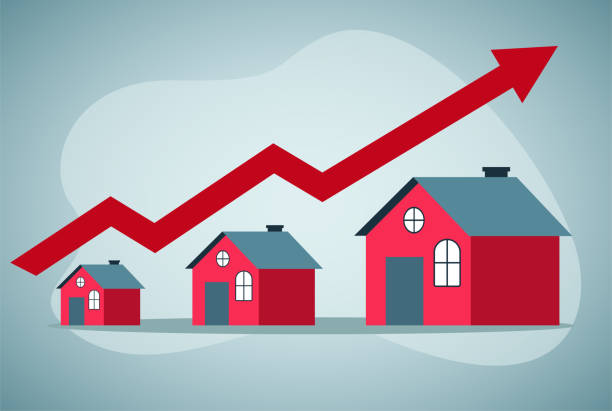
Pollution is a prevalent issue in today’s world, and its effects can often go unnoticed. While we may not see it, pollution is a silent threat that poses a danger to our health, environment, and economy. From air and water pollution to plastic waste and chemical contamination, the effects of pollution are far-reaching and can have devastating consequences. In this blog post, we will delve into the invisible peril of pollution and explore its negative effects on our planet and our lives.
Understanding Pollution Types and Sources
Pollution is a complex issue that stems from a variety of sources and manifests in various forms. Understanding the types and sources of pollution is crucial in addressing the problem effectively. In this section, we will delve into the different categories of pollution and explore the primary sources of each.
Air pollution is one of the most well-known and visible forms of pollution. It is primarily caused by the release of harmful substances into the atmosphere, such as vehicle emissions, industrial processes, and the burning of fossil fuels. These pollutants, including carbon monoxide, sulfur dioxide, and particulate matter, contribute to respiratory diseases, cardiovascular problems, and even premature death.
Water pollution, on the other hand, refers to the contamination of water bodies by pollutants such as industrial waste, sewage, agricultural runoff, and oil spills. These pollutants can have detrimental effects on aquatic ecosystems, leading to the death of fish and other marine life. Additionally, water pollution poses a significant threat to human health, as contaminated water can cause waterborne diseases, such as cholera and hepatitis.
Another form of pollution that has gained widespread attention in recent years is plastic pollution. It refers to the accumulation of plastic waste in the environment, particularly in oceans and landfills. Plastics take hundreds of years to decompose, leading to devastating effects on wildlife, marine ecosystems, and even human health. Micro plastics, tiny plastic particles that are often invisible to the naked eye, have been found in drinking water, seafood, and even the air we breathe.
Chemical pollution encompasses a wide range of toxic substances, including heavy metals, pesticides, and industrial chemicals. These pollutants can contaminate soil, water, and air, posing risks to human health and ecosystems alike. Exposure to chemical pollutants has been linked to various health issues, such as cancer, reproductive problems, and neurological disorders.
Understanding the different types and sources of pollution allows us to develop targeted strategies for prevention and mitigation. By addressing the root causes of pollution and adopting sustainable practices, we can protect our environment, safeguard human health, and ensure a better future for generations to come.
Delving into the Impact of Pollution on Human Health
Pollution has a profound impact on human health, affecting us in ways that are both visible and invisible. While some of the immediate effects of pollution on our health are apparent, such as respiratory problems caused by air pollution, there are also hidden dangers that can have long-term consequences.
Air pollution, for example, is a major contributor to respiratory diseases such as asthma, bronchitis, and lung cancer. The release of pollutants like carbon monoxide, sulfur dioxide, and particulate matter into the atmosphere can irritate the respiratory system and lead to chronic health issues. Long-term exposure to air pollution has also been linked to cardiovascular problems and even premature death.
Water pollution poses a significant threat to human health as well. Contaminated water can harbor harmful bacteria, viruses, and parasites that cause waterborne diseases such as cholera, typhoid, and hepatitis. Ingesting or coming into contact with polluted water can have serious consequences for our health, particularly for vulnerable populations like children and the elderly.
Chemical pollution is another major concern when it comes to human health. Exposure to toxic substances such as heavy metals, pesticides, and industrial chemicals has been linked to a range of health issues, including cancer, reproductive problems, and neurological disorders. These chemicals can enter our bodies through contaminated air, water, and food, posing risks to our well-being.
In addition to these direct health impacts, pollution also exacerbates existing health disparities. Disadvantaged communities, often those with limited access to healthcare and resources, bear the brunt of pollution-related health issues. This environmental injustice further widens the gap between the haves and the have-nots, highlighting the urgent need for equitable solutions.
Overall, pollution has a multifaceted impact on human health. Its effects are not limited to physical health alone but also extend to mental and emotional well-being. Addressing the impact of pollution on human health requires comprehensive and collaborative efforts from individuals, communities, and governments. By taking steps to reduce pollution and promote sustainable practices, we can protect our health and create a healthier future for ourselves and generations to come.

The Damaging Effect of Pollution on Our Ecosystem
The damaging effects of pollution on our ecosystem are far-reaching and have significant implications for the delicate balance of nature. Pollution disrupts ecosystems in multiple ways, causing harm to plants, animals, and entire habitats.
One of the most evident consequences of pollution on our ecosystem is the destruction of biodiversity. Pollution, such as chemical runoff and habitat destruction, destroys the natural habitats of many species, leading to a loss of biodiversity. This loss disrupts the intricate web of relationships that exist between species and can have cascading effects throughout the ecosystem.
Pollution also leads to the contamination of water bodies, such as rivers, lakes, and oceans. This contamination not only affects the marine life that calls these bodies of water home but also poses risks to the entire food chain. Chemical pollutants can accumulate in the tissues of fish and other aquatic organisms, eventually making their way into the bodies of predators, including humans. This bio-accumulation can have detrimental effects on the health of both wildlife and people.
Air pollution, another significant contributor to ecosystem damage, affects both plants and animals. Harmful pollutants in the air, such as sulfur dioxide and nitrogen oxides, can lead to acid rain, which harms forests, soils, and bodies of water. Acid rain damages trees and plants, making them more vulnerable to disease and reducing their ability to support other organisms. In addition, air pollution can also lead to the deterioration of the ozone layer, further impacting the delicate balance of our ecosystem.
The damaging effect of pollution on our ecosystem cannot be overstated. It threatens the survival of countless species, disrupts habitats, and compromises the integrity of our natural resources. Recognizing and addressing the impact of pollution on our ecosystem is crucial to ensure a sustainable and thriving planet for future generations.

Global Climate Change A Result of Rising Pollution Levels
Global climate change is a direct consequence of the rising levels of pollution in our world. As pollution continues to increase, so does the concentration of greenhouse gases in our atmosphere, leading to significant changes in our climate patterns. This phenomenon, often referred to as global warming, has far-reaching consequences for our planet and all its inhabitants.
The main driver of global climate change is the burning of fossil fuels. When we burn coal, oil, and natural gas for energy, carbon dioxide and other greenhouse gases are released into the atmosphere. These gases act like a blanket, trapping heat and causing the Earth’s temperature to rise. As a result, we are witnessing an increase in extreme weather events, rising sea levels, and shifts in ecosystems worldwide.
One of the most immediate impacts of climate change is the increase in the frequency and intensity of natural disasters. Heat waves, hurricanes, floods, and wildfires are becoming more frequent and severe, displacing communities, destroying homes, and causing loss of life. The economic costs of these disasters are staggering, as countries and communities struggle to recover and rebuild.
Another consequence of global climate change is the disruption of ecosystems and loss of biodiversity. Rising temperatures and changing weather patterns affect the distribution and behavior of plant and animal species, leading to habitat loss and species extinction. This loss of biodiversity threatens the stability and resilience of ecosystems, making them more vulnerable to further disruption.
Global climate change also poses a threat to food security and water resources. Changes in temperature and precipitation patterns can affect crop yields and water availability, leading to reduced agricultural productivity and increased competition for resources. This can have devastating impacts on vulnerable communities that rely on agriculture and natural resources for their livelihoods.
Addressing global climate change requires urgent and collective action. We need to transition to renewable sources of energy, reduce greenhouse gas emissions, and adopt sustainable practices in all sectors of society. By mitigating climate change, we can protect our planet, safeguard human health and well-being, and ensure a sustainable future for generations to come. It is up to each and every one of us to take responsibility and be part of the solution.

The Economic Cost of Pollution Who Pays the Price?
Pollution not only wreaks havoc on our health, environment, and ecosystem, but it also comes with a hefty economic cost. The question is, who pays the price for this invisible peril?
The truth is, we all do. Pollution has far-reaching economic consequences that affect individuals, communities, and governments alike. Let’s break down the economic cost of pollution and understand how it impacts various stakeholders.
First and foremost, individuals bear the financial burden of pollution-related health issues. The medical costs associated with treating respiratory diseases, waterborne illnesses, and other pollution-related health conditions can be astronomical. From doctor visits and medication expenses to hospital stays and long-term treatments, the cost of healthcare adds up quickly for those affected by pollution.
Communities also suffer economically due to pollution. Pollution can lead to the degradation of local environments, reducing the value of homes and properties. Additionally, pollution-related issues can negatively impact tourism and the local economy. Who wants to visit a place with contaminated water or smog-filled air?
Governments are also strained financially by pollution. They must allocate funds to address pollution-related emergencies, such as oil spills or chemical disasters, as well as invest in clean-up efforts and environmental restoration projects. The costs of regulating pollution and enforcing environmental standards are significant as well.
Furthermore, pollution can have long-term economic consequences for industries that rely on natural resources. For example, the fishing industry suffers when water bodies become contaminated, leading to a decline in fish populations. Farmers face challenges when pollution affects soil quality, reducing crop yields and impacting their livelihoods.
Ultimately, we all pay the price for pollution, whether it’s through increased healthcare costs, reduced property values, or the loss of natural resources. However, it’s essential to recognize that prevention is cheaper than the cure. By investing in pollution prevention measures, transitioning to sustainable practices, and holding polluters accountable, we can mitigate the economic burden and create a healthier, more prosperous future for all.

Mitigation Strategies How Can We Counteract Pollution?
Pollution may seem like an insurmountable issue, but there are actionable steps we can take to counteract its negative effects. Mitigation strategies play a crucial role in reducing pollution and creating a healthier, more sustainable future for our planet.
One key strategy is transitioning to renewable sources of energy. By embracing solar, wind, and hydro-power, we can significantly decrease our reliance on fossil fuels and reduce the amount of greenhouse gases released into the atmosphere. Governments, businesses, and individuals all have a role to play in supporting the development and adoption of renewable energy technologies.
Another important step is promoting sustainable transportation options. Investing in public transportation systems, encouraging the use of electric vehicles, and prioritizing cycling and walking infrastructure can help reduce vehicle emissions and improve air quality in our cities. Additionally, carpooling and ride-sharing initiatives can further minimize the number of vehicles on the road.
Reducing waste and promoting recycling and composting are also essential in mitigating pollution. By minimizing our use of single-use plastics, opting for reusable products, and properly disposing of waste, we can prevent plastic pollution from further damaging our environment. Additionally, supporting businesses that prioritize sustainable packaging and materials can have a significant impact.
Educating and raising awareness about the importance of pollution prevention is another crucial mitigation strategy. By promoting environmental literacy and empowering individuals to make sustainable choices in their daily lives, we can create a culture of sustainability that transcends generations.

Collaborative efforts between governments, industries, communities, and individuals are essential in implementing these mitigation strategies effectively. By working together and taking responsibility for our actions, we can counteract pollution and create a brighter, cleaner future for ourselves and future generations.
So, let’s commit to making a change today. Together, we can turn the tide against pollution and pave the way for a healthier and more sustainable planet. The time for action is now.




Nice
Global warming effect the people economic how please explain,?